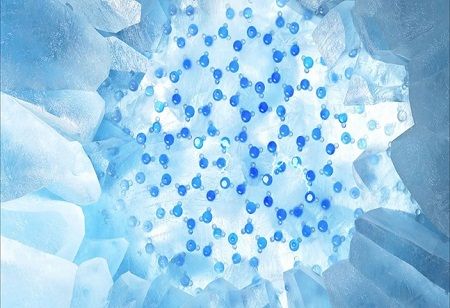A team of Chinese researchers has achieved a groundbreaking observation of an ice surface at atomic resolution, revealing that ice begins to melt at an astonishingly low temperature of minus 153 degrees Celsius. This discovery has significant implications for understanding various natural and atmospheric phenomena, including ice formation, stratospheric ozone depletion, and the electrification of thunderclouds.
Historically, the study of ice surfaces was limited by the lack of experimental methods capable of examining them at the atomic level. Researchers from Peking University's School of Physics and the Interdisciplinary Institute of Light-Element Quantum Materials have now overcome this challenge. Utilizing a domestic qPlus scanning probe microscope, they developed an imaging technique that distinguishes hydrogen atoms and chemical bonds, accurately identifies the orientation of water molecules, and precisely locates dangling hydrogen atoms.
Premelting, the phenomenon where the ice surface begins to melt at temperatures below zero degrees Celsius, is essential for understanding cloud formation and glacier melting. Previously, it was believed that ice surface premelting started at approximately minus 70 degrees Celsius. However, this topic has been debated for over 170 years due to the complexity of the ice surface structure and the mechanisms behind premelting.
Through temperature variation experiments, the researchers were able to observe the premelting process at the atomic scale. They discovered that this process begins much earlier than previously thought, at minus 153 degrees Celsius. This finding significantly refines the long-standing knowledge of ice surface structure and its premelting mechanism.
Wang Enge, an academician from the Chinese Academy of Sciences, emphasized the importance of this study, noting that it provides a more detailed understanding of the ice surface structure and the premelting process. This new insight could have far-reaching implications for the study of atmospheric reactions and natural phenomena related to ice.

